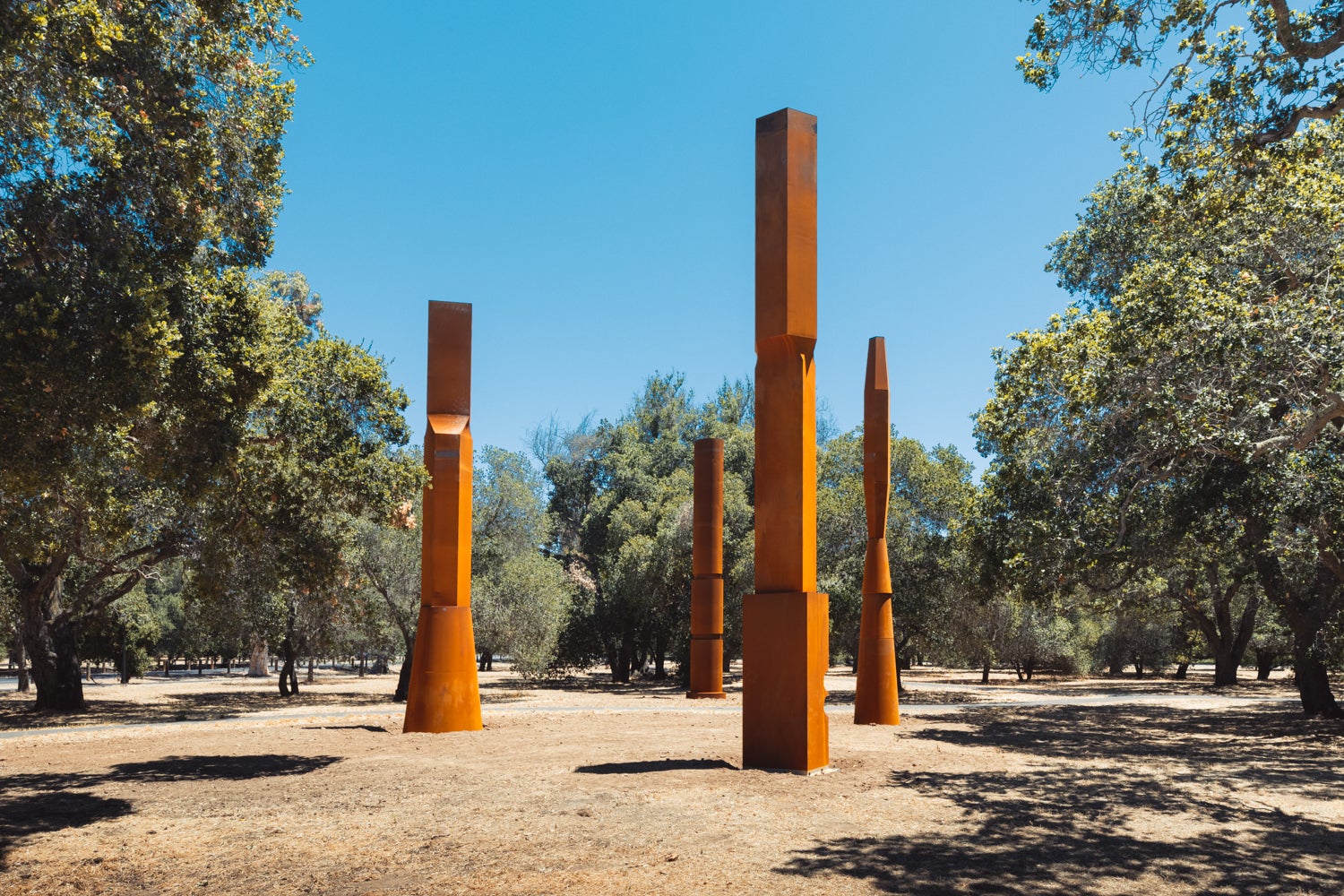Towering and timeless, ‘Stanford Columns’ expands the campus arts district
The new public artwork installation by award-winning American sculptor and environmental artist Beverly Pepper is an iteration of an installation in Italy created specifically for the Stanford campus.
Standing among the stately California oaks and walking paths at the outer edge of Stanford’s vast arboretum stands a new public artwork acquisition by Beverly Pepper (1922-2020). Installed last month across Lomita Drive from the Anderson Collection, The Stanford Columns, 2022, is a gift from the Fisher Family in honor of Doris Fisher, ’53, and her lifelong friendship with the artist.
Pepper’s celebrated international career includes an International Sculpture Center’s Lifetime Achievement Award in 2013 acknowledging her contribution to sculpture. Previous recipients include Louise Bourgeois, Frank Stella, and Anthony Caro.
Stanford’s Public Art Committee has been actively transforming the campus landscape with site-specific outdoor works, including Pars Pro Toto by Alicja Kwade in the Science and Engineering Quad and Hello by Xu Zhen on the Meyer Green plinth. Pepper’s The Stanford Columns joins Stone River by Andy Goldsworthy across from the art museums.
“The public art committee is very excited about this addition to the campus art program. We determined that the expansive arboretum adjacent to the art museums would be the perfect place for Beverly Pepper’s monumental work that suggests classical ruins, urban engineering, and the towering trees on campus,” said Matthew Tiews, the outgoing associate vice president for campus engagement who concluded his leadership of the Public Art Committee in May. “This addition to the arts district makes it more of a destination than ever.”
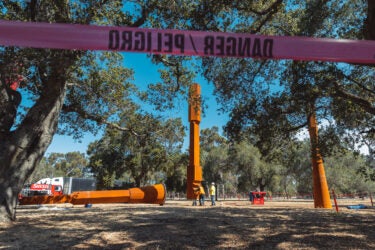
Image credit: Andrew Brodhead
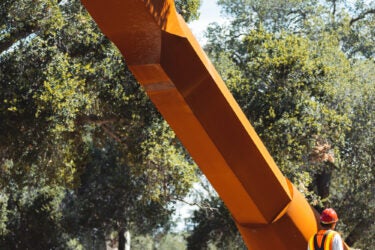
Image credit: Andrew Brodhead
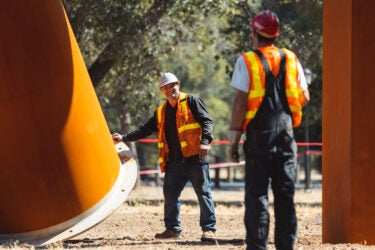
Image credit: Andrew Brodhead
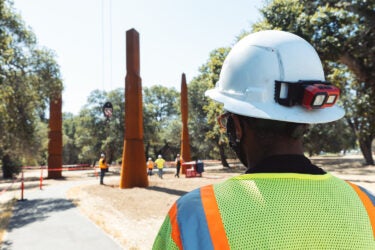
Image credit: Andrew Brodhead
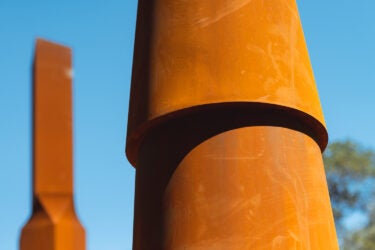
Image credit: Andrew Brodhead
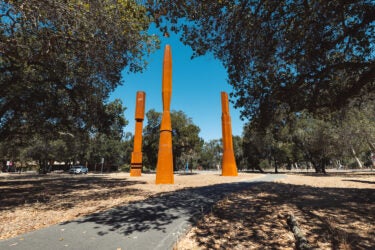
Image credit: Andrew Brodhead
Given the enduring relationship between the Fishers and Pepper that evolved from one of patrons and artist to mutual friendship, it is fitting that this work comes to the Stanford campus to honor Doris Fisher. In 1999, the Fishers gifted Split Pyramid, 1971, to the Cantor Arts Center, which the artist claimed was one of her favorite works. Three years later, the Cantor acquired another of Pepper’s outdoor works, Bedford Sentinels, 1990.
The Stanford Columns is an edition of Pepper’s sculpture The Todi Columns in Todi, Italy, where the artist lived for decades, and was explicitly fabricated for Stanford. The bright reddish-brown color of the Cor-Ten steel signals that the origin of the 40-foot columns is a foundry, not a seed. But the velvety look of the oxidized patina is not unlike brightly colored lichen, and the four tapered, irregular steel columns, each weighing between 3 and 5 tons, suggest the trunks of massive trees. The effect is at once industrial and organic. Pepper once said of her work, “I intend for sculptures to bridge time, hopefully holding a measure of those eternal qualities that attract us to the world’s great ageless monuments.”
“My mother, having lived so much of her life in Italy, was always in conversation with an ‘antiquity’ which is sempiternal,” said Pulitzer Prize-winning poet Jorie Graham, Pepper’s daughter. “She never thought of the past as past. And she spoke directly to those in the deep future. She imagined, no doubt, how they might come upon this place in 500 or 1,000 years, wondering what these totems were for, who the creatures were that built them, what they worshipped, why they disappeared. It’s astounding to imagine the temporal durations they reach into and awaken. And it confers upon them a sublime anonymity – which she strived for in everything she did.”
A life of achievement
Born in 1922 in Brooklyn, Beverly Pepper trained to be a painter in Paris. She moved to Italy in the 1950s and later turned to sculpture. In addition to a lifetime of gallery exhibitions, she had numerous solo museum shows, including at The Brooklyn Museum, New York; the San Francisco Museum of Art, California; and most recently, Museo dell’Ara Pacis in Rome. She died in February 2020.
Pepper was drawn to materials with the perennial ability to speak to future generations. In an interview, she said, “Obviously we can’t rebuild the monuments of the ancient world, but we can aspire to re-evoke, in however modern a world, some of the enduring and perhaps renewable sensations of amazement, even awe.”
